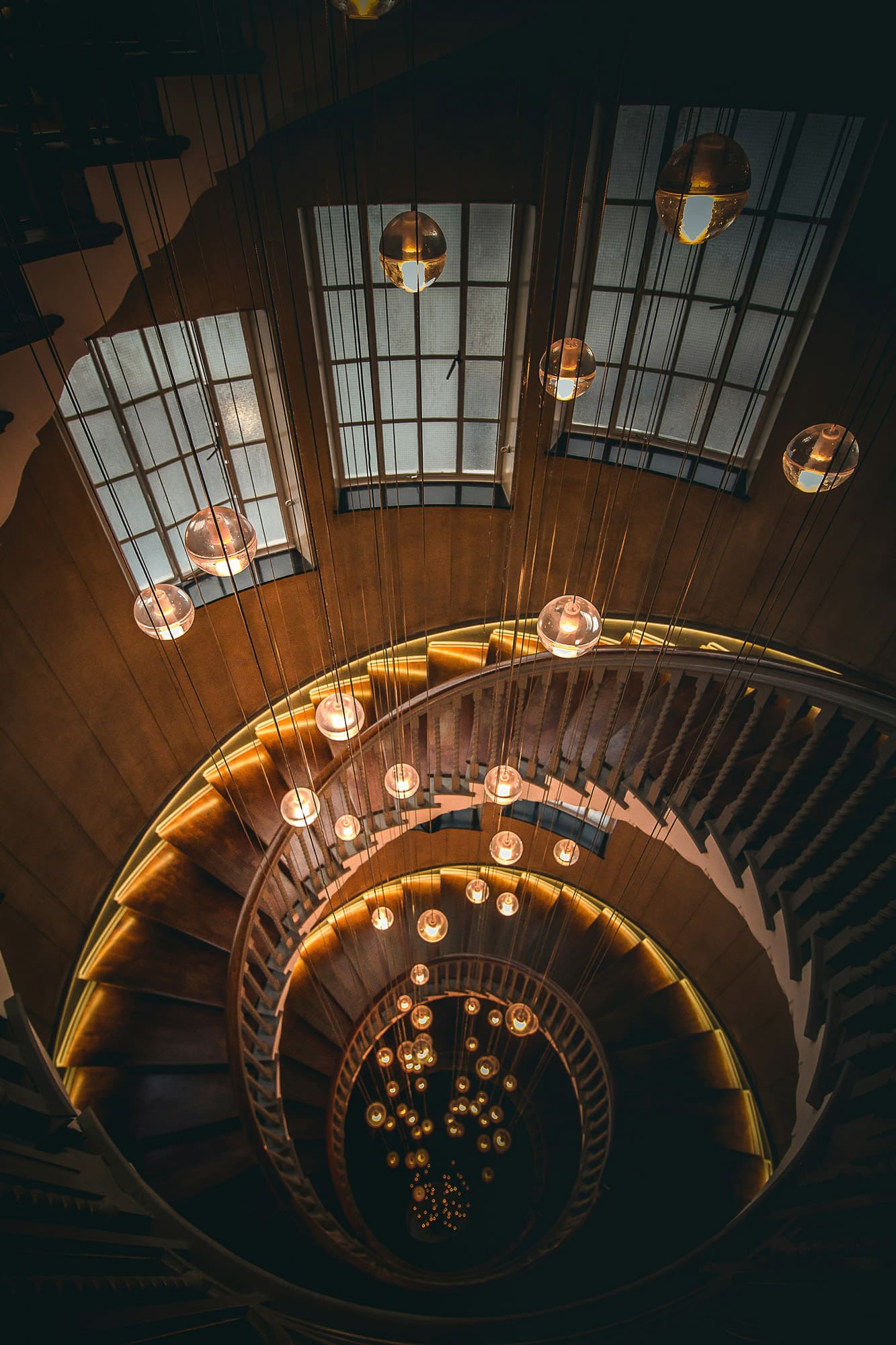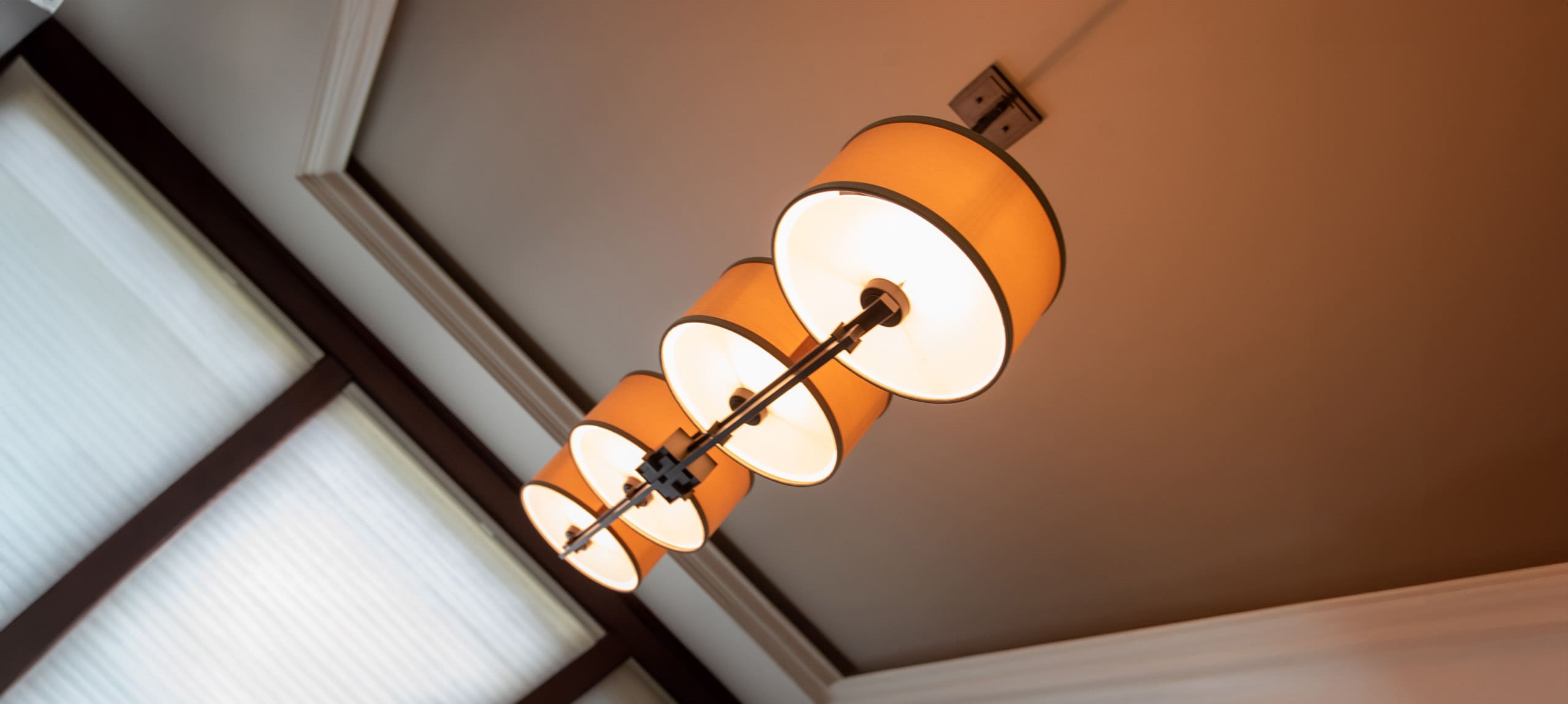Lighting is more than a necessity; It shapes the way we experience our environment, and these experiences can affect our mood. Here, we’ll explore dimmable lighting, including the evolution of dimming technology, the specifics of dimmable vs non-dimmable bulbs, and how choosing the right bulb can transform your space. Let’s address a few topics:
- The evolution of dimming technology
- Insights into the workings of dimmable LED light bulbs
- Practical tips for choosing the right dimmable light bulb for your space
A History of Dimming in Lighting
The evolution of dimming technology began in theatrical settings through rudimentary methods like rheostats and salt-water dimmers. These early innovations, despite their limitations, paved the way for modern dimming solutions. A pivotal moment in this evolution was the invention of solid-state dimmers by Joel Spira, who later founded Lutron Electronics. In the mid-20th century, these dimmers reshaped lighting control by utilizing semiconductor technology, which offered unprecedented efficiency and precision. This transition marked a shift from manual, bulky systems to the sleeker, electronically controlled dimming solutions we’re familiar with today.

Bocci installation in Heals, London. Image courtesy Ryan Searle
Understanding Dimmable Bulbs
Dimmable light bulbs play a crucial role in both visual appeal and energy conservation. For LEDs, several dimming methods are employed:
- Analog Method: This involves altering the current flowing through LEDs using resistors, which can sometimes affect the color and uniformity of the light produced.
- Pulse Width Modulation (PWM) Method: This method involves rapidly switching the LEDs on and off at a speed imperceptible to the human eye. The light intensity is determined by the ratio of the on and off cycles.
- Constant Current Reduction (CCR) Method: This method maintains the current flow through the bulb at a specific level, altering it to vary the output, thus controlling the light characteristics like color temperature.
Selecting the appropriate lighting involves more than just aesthetic preferences — it's about matching the bulb's capabilities to the specific needs of a space.
Importance of Internal Components
The performance of a dimmable LED light bulb hinges on its internal components. For instance, the types and quality of resistors are crucial in the analog method, influencing LED current flow and light quality. Circuitry design plays a key role in PWM and CCR methods, affecting the precision of light output, from brightness levels to color uniformity. Advanced internal components in LED bulbs enable a wider, more efficient dimming range. This ensures smooth light transitions without flickering or inconsistency and directly impacts energy efficiency, bulb lifespan, and light quality.
EmeryAllen’s -D and Non-D Bulbs
EmeryAllen offers both standard and more advanced dimmable LED bulbs, including dim to warm bulbs. A “-D” at the end of our product part numbers signifies that the bulb is a dimmable LED with full dimming capabilities. These bulbs offer a broader and more nuanced dimming range, which is ideal for settings where precise light control is desired. On the other hand, the standard (non-D) bulbs are designed for general lighting needs, offering efficient dimming but with less emphasis on extensive range and fine control.
Choosing the Right Bulb: Practical Considerations
Selecting the appropriate lighting involves more than just aesthetic preferences — it’s about matching the bulb’s capabilities to the specific needs of a space. Consider these factors:
- Assess Functionality and Ambiance: The room’s purpose significantly impacts your lighting choice. For areas requiring a calming effect, like bedrooms or lounges, EmeryAllen’s -D bulbs are ideal due to their extensive dimming range that allows for subtle ambiance adjustments. In contrast, spaces needing clear and consistent lighting, such as kitchens or offices, may benefit more from the non-D bulbs.
- Compatibility Check: Ensure the bulbs are compatible with your existing fixtures and dimmer switches. Since not all dimmers are suited to all bulb types, this step is crucial to avoid technical issues like flickering or suboptimal dimming.
- Lighting Configuration: Consider the overall lighting setup. For layered lighting designs, where task, ambient, and accent lighting coexist, choosing a mix of -D and non-D dimmable light bulbs can offer flexibility and control over the lighting environment.
- Energy Efficiency and Lifespan: Look beyond the initial cost and consider long-term benefits such as energy savings and durability. The advanced technology in -D bulbs often translates to better energy efficiency and a longer lifespan, making them a better and more cost-effective choice in the long run.
- Expert Consultation: If in doubt, don’t hesitate to reach out! We can help guide you to the best option for your specific requirements, ensuring your lighting investment is exactly what you need!
Finding the Perfect Dimmable LED Lighting for Your Needs

The choice between -D and non-D bulbs boils down to understanding their unique dimming capabilities and how they align with your lighting needs. Whether you’re aiming for a wider dimming range to create ambiance with the -D bulbs or seeking practical illumination with the non-D variants, choosing the right dimmable LED light bulbs enhances the aesthetics of a space while also contributing to energy efficiency and overall functionality.
Still have questions? Contact us for help finding the perfect lighting solutions for your needs.


